Dore, Herefordshire
Up to 1834
The parish of Madley appears to have had a workhouse by 1730.
In 1815, the parish of Abbey Dore made an agreement for the use of Vowchurch's workhouse.
A parish workhouse also existed at Kentchurch.
After 1834
Dore (sometimes referred to as Abbey Dore) Poor Law Union was formed on 27th March 1837. Its operation was overseen by an elected Board of Guardians, 33 in number, representing its 29 constituent parishes as listed below (figures in brackets indicate numbers of Guardians if more than one):
County of Hereford:
Abbey Dore, Bacton, Craswell, Dulas, Ewyas Harrold, Kenderchurch, Kentchurch, Kilpeck, Kingston, Llanello, Llanveyna, Longtown (2), Madley (2), Michaelchurch Escley, Newton, Orcop, Peterchurch (2), Rollstone, St Devereaux, St Margaret's, Thruxton, Tiberton, Treville, Turnastone, Vowchurch, Waterstone, Wormbridge.
County of Monmouth:
Grosmont (2), Llangua.
The population falling within the Union at the 1831 census had been 9,203 with parishes ranging in size from Stretford (population 54) to Longtown (938). The average annual poor-rate expenditure for the period 1834-36 had been £4,591 or 10s.0d per head of the population.
The new Dore Board of Guardians met for the first time on 11th April 1837 at the Red Lion Inn, Abbey Dore (now the site of Abbey Dore Court). A new workhouse for 80-100 inmates was built in 1837-8 on a piece of land called 'Upper Drew' to the north of Abbey Dore, for which a loan of £2,000 was taken out from the Exchequer. The architect for the building was John Plowman who was responsible for other Herefordshire workhouses at Hereford and Ross. When approving the plans, the Poor Law Commissioners noted that they lacked any special work-rooms, a mill room or bakehouse, washing places and a dead house. The workhouse location and layout are shown on the 1902 map below:
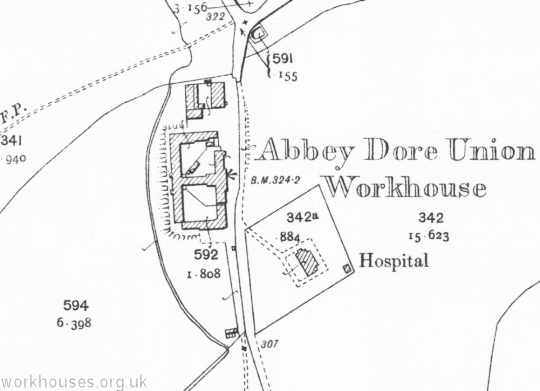
Dore workhouse site, 1902.
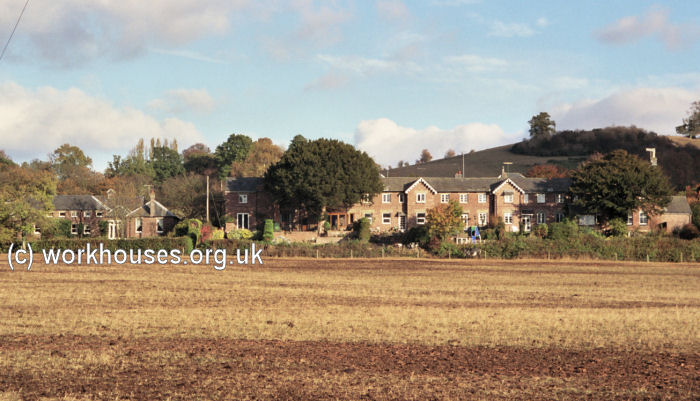
Dore workhouse buildings from the west.
© Peter Higginbotham.
The main workhouse building was built around two yard areas, one for males to the north, and for females to the south, each being divided diagonally to separate adults from children. The entrance block at the west contained the Guardians' board-room, day-rooms, and a receiving ward.
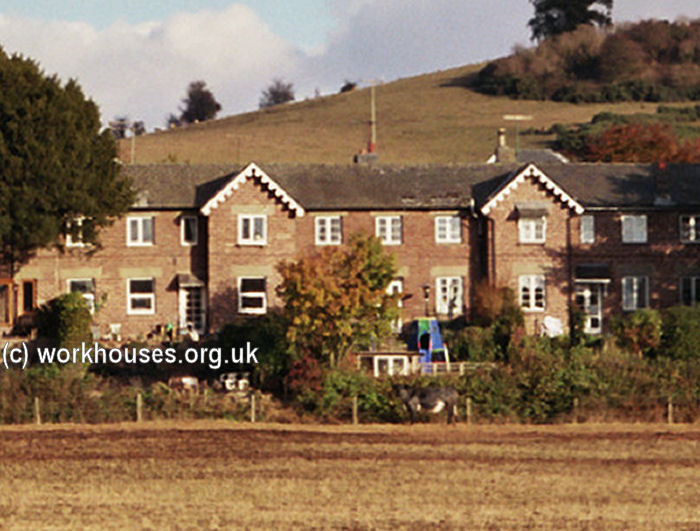
Dore workhouse entrance block from the west.
© Peter Higginbotham.
The dividing block across the centre of the building contained kitchen and dining hall.
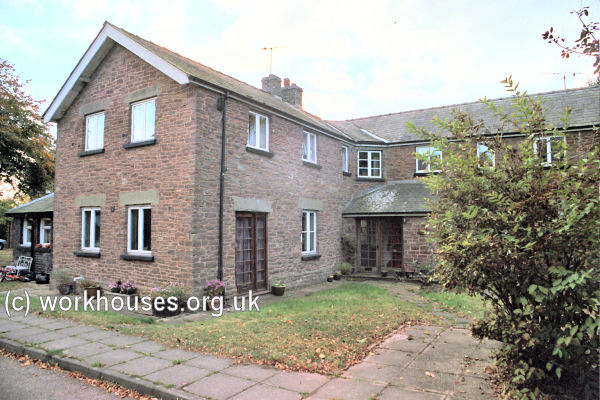
Dore rear of workhouse entrance block from the north-east.
© Peter Higginbotham.
To the rear lay the original infirmary block.
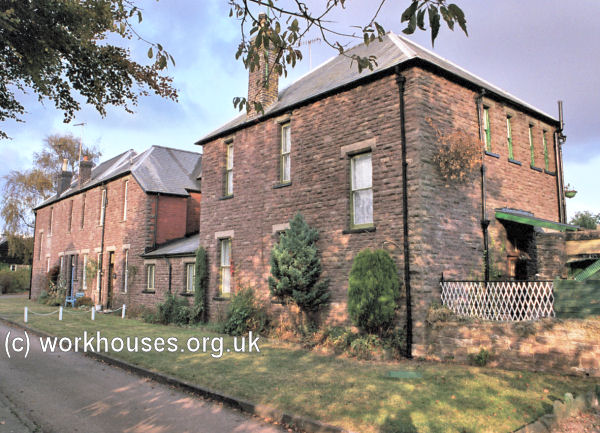
Dore original workhouse infirmary block from the south-west.
© Peter Higginbotham.
A porter's lodge and casuals' ward were in a separate block to the north, with a stable block to its east.
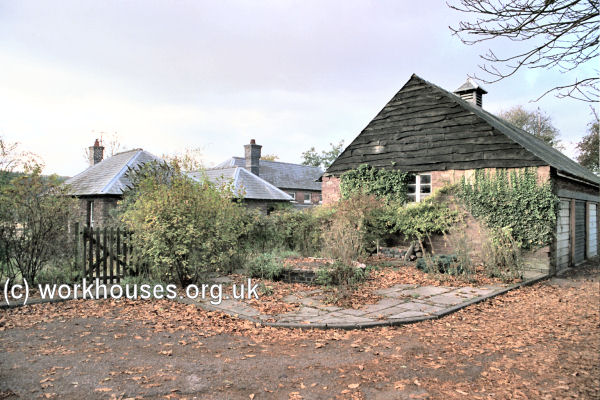
Dore workhouse porter's lodge, casuals' ward and stables from the south-east.
© Peter Higginbotham.
A separate hospital block was later erected at the south east of the workhouse.
Between 1930 and 1935, the workhouse was council-run Public Assistance Institution. During the Second World War, part of the premises were used by the firm of Chalmers as a tractor factory. After the war, the buildings were bought by a Mr Woodhouse who converted them into a number of cottage dwellings now known as 'Riverdale'.
Staff
Inmates
Records
Note: many repositories impose a closure period of up to 100 years for records identifying individuals. Before travelling a long distance, always check that the records you want to consult will be available.
- Herefordshire Archives and Record Centre, Fir Tree Lane, Hereford HR2 6LA. Holdings include: Guardians' minute books (1837-1930); Admissions and discharges (1850-1916, with gaps); Births (1914-30); etc.
Bibliography
- Dore Workhouse in Victorian Times by Nancy Elliot.
Links
- None.
Unless otherwise indicated, this page () is copyright Peter Higginbotham. Contents may not be reproduced without permission.


